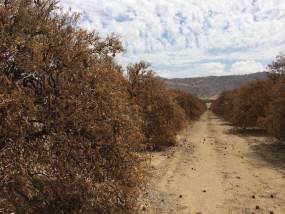Statement by Mike Wade, Executive Director of the California Farm Water Coalition on the Initial Allocation Announcement by the Bureau of Reclamation February 25, 2020 “Today’s announcement by the Bureau of Reclamation of a 15 percent initial allocation for water supplies south of the Delta is clearly the result of the dry hydrology California is […]
Statement on Allocation of California Water by USBR
Today’s announcement of a 5 percent allocation for Central Valley Project water users south of the Delta is another blow to farmers, rural communities and consumers who buy California farm products. If last year is any indication a number of specialty crops grown on the San Joaquin Valley’s Westside will once again be on the […]
